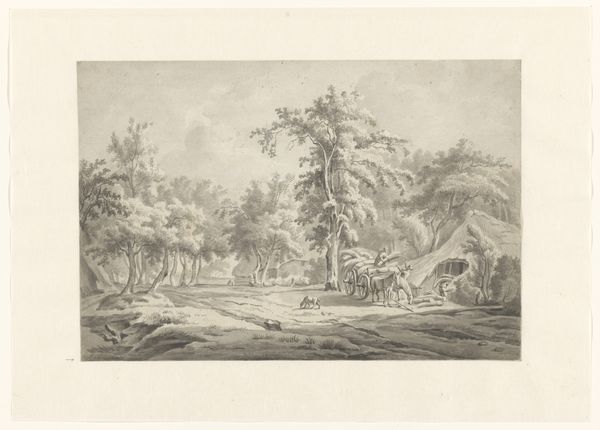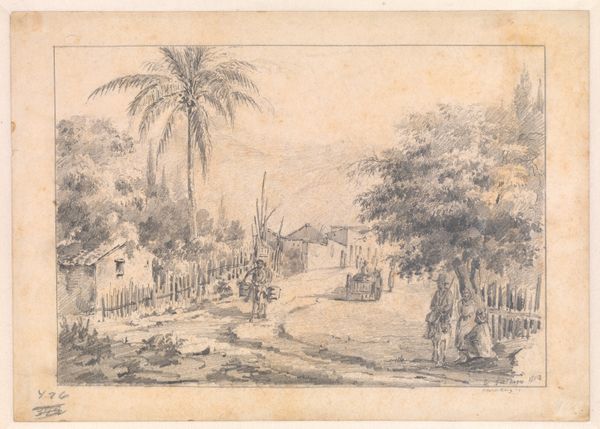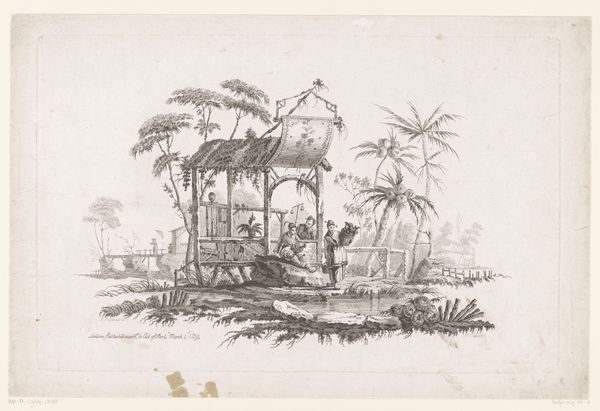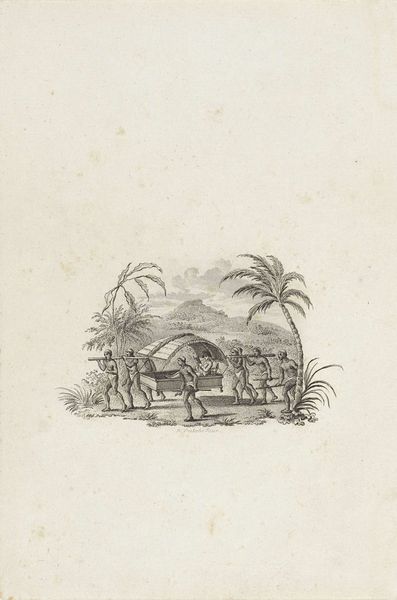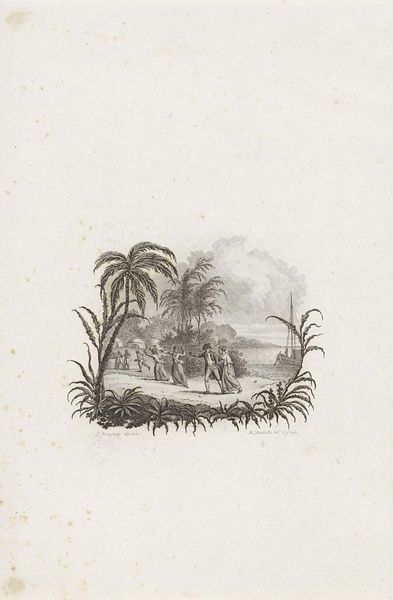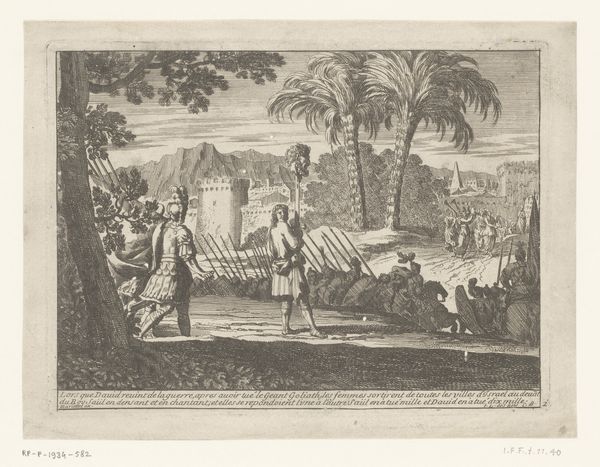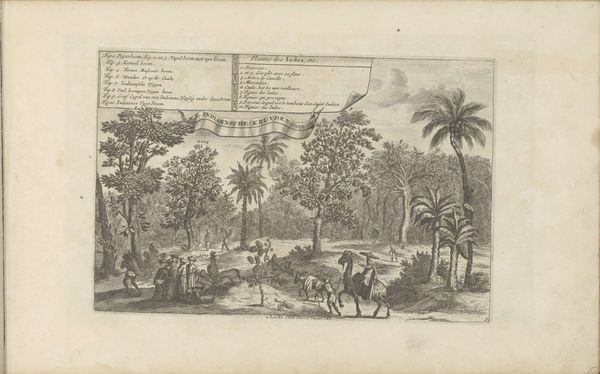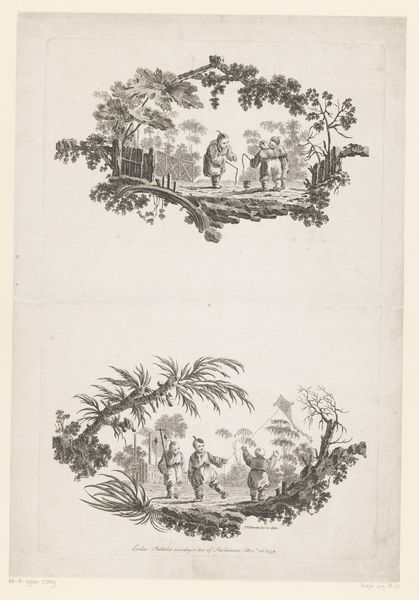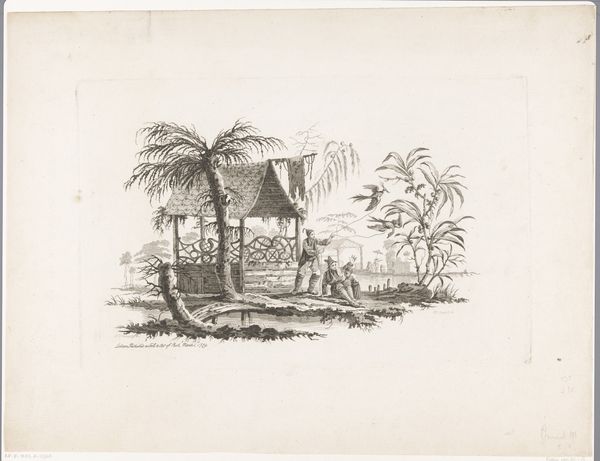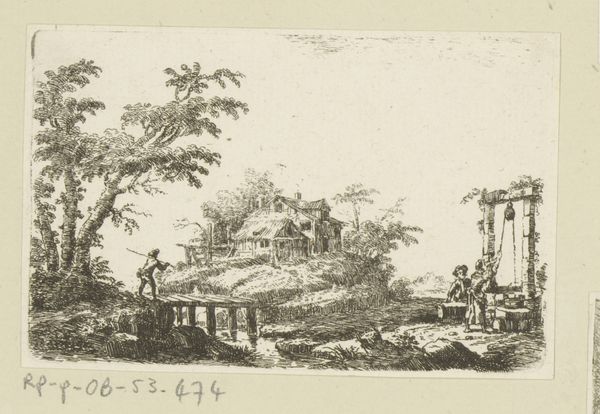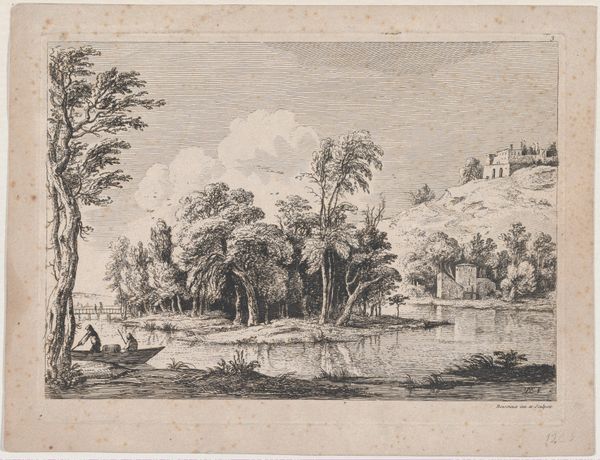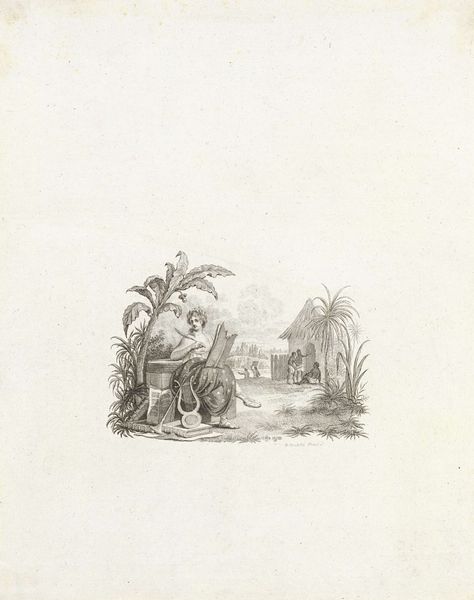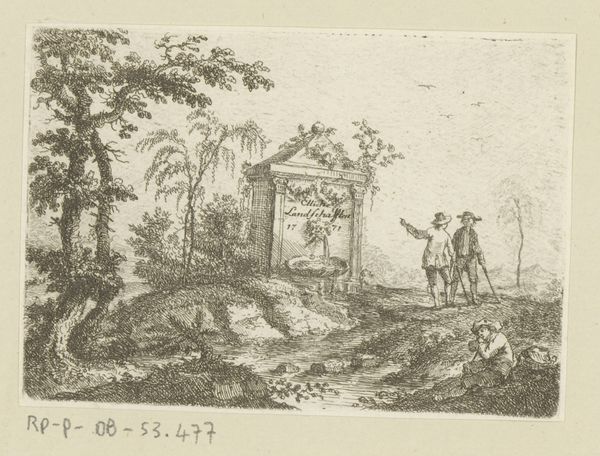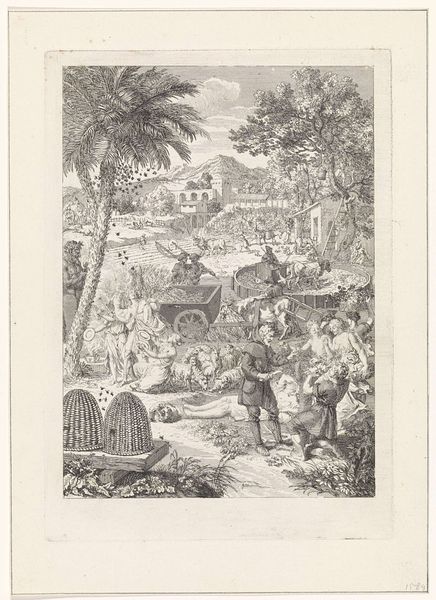
drawing, pencil
#
drawing
#
landscape
#
pencil
#
orientalism
#
academic-art
Dimensions: height 21.9 cm, width 29.1 cm
Copyright: Rijks Museum: Open Domain
Curator: This drawing, created with pencil, offers a glimpse into a "Straatgezicht net buiten Paramaribo," or a street scene just outside Paramaribo, painted by Hendrik Huygens, most likely before 1859. Editor: My first impression is of quiet industry. The delicate pencil work lends the scene a serene, almost ethereal quality, yet there is palpable evidence of labor within. Curator: Yes, the setting is Paramaribo, now the capital of Suriname. Huygens’s drawing reveals an academic leaning towards orientalist landscape, placing the viewer in a Dutch colony, where, although likely imagined or idealized, local customs meet colonial governance. Editor: What strikes me is how Huygens renders the architecture—these seemingly makeshift structures against the lush tropical backdrop. One can imagine they're assembled from locally sourced materials, like wood and thatch, reflecting the available resources and the builders' skills. Curator: And the artist's rendering gives us insight into a burgeoning colonial system. Note the figures. We see women bearing head loads. What is the social commentary here, if any, with such figures dominating the scene? It subtly reminds us of the dynamics of labor and perhaps, exploitation within a colony. Editor: Agreed. Also note the fineness of the line and detail! Even the woven baskets seem painstakingly depicted. I am curious about the source of Huygens’ pencil, but also, I can imagine the labor needed to gather, prepare, and assemble the plants to erect such a structure, providing shelter from rain or sun. Curator: Precisely. His focus provides more than just scenery. It is imbued with historical narrative – an archive. What this piece reveals about colonialism, the interactions it fostered, or perhaps more accurately, forced… that is profound. Editor: Indeed. Looking at Huygens's piece, one is confronted with more than a street scene, but with questions about how humans shape their environments and vice versa through materials and customs. Curator: It's a thoughtful exercise of how we, as viewers, understand that intersection within a historical lens. Editor: I agree. Huygens prompts us to appreciate the unseen labor that permeates art making, even here.
Comments
No comments
Be the first to comment and join the conversation on the ultimate creative platform.
